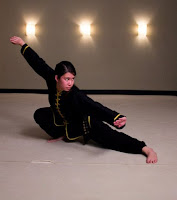If you were to climb to the summit of Kilimanjaro would you ask yourself “What is the best way to the top?”
The answer to upper question can vary:
YES - then you would have to define what is the best route for you.
NO - then you probably already know how you would like to achieve the top.
There are several ways by which you can reach Kibo or Uhuru Peak, which are the highest points of Mount Kilimanjaro (Machame, Marangu, Mweka, Londorossi Lemosho, Shira, Rongai, Umbwe and Northern Circuit). They are all different but all help you reach the same final goal, which is to reach the TOP.
Why are there so many routes that lead to the top? The primary issue lies within each person that wants to reach the peak. Would we like to do it fast, slow or do we want panoramic views (probably this one)?
Why are there so many routes that lead to the top? The primary issue lies within each person that wants to reach the peak. Would we like to do it fast, slow or do we want panoramic views (probably this one)?
Personal preferences are different and consequently, each route has different obstacles. It is the same in Martial Arts. Some are based on the ground, some are based on kicks and some are even based on grappling. But all have the same end goal, which is to learn the art and get experience in combat. This is why it depends on each individual.
Over the years I've also found another issue that I’d like to share. It illustrates an even deeper goal like the story above of Kilimanjaro. If we carefully watch great martial arts masters we could definitely see very similar postures, movements and use of the fighting techniques. In majority of martial arts. It actually does not matter which school or style they came from. They present the peak of martial arts’ knowledge – like Uhuru for Kilimanjaro. And the ‘routes’ (style of martial art) they took to master it could have been very different!
Why is this so?
Over the years I've also found another issue that I’d like to share. It illustrates an even deeper goal like the story above of Kilimanjaro. If we carefully watch great martial arts masters we could definitely see very similar postures, movements and use of the fighting techniques. In majority of martial arts. It actually does not matter which school or style they came from. They present the peak of martial arts’ knowledge – like Uhuru for Kilimanjaro. And the ‘routes’ (style of martial art) they took to master it could have been very different!
Why is this so?































